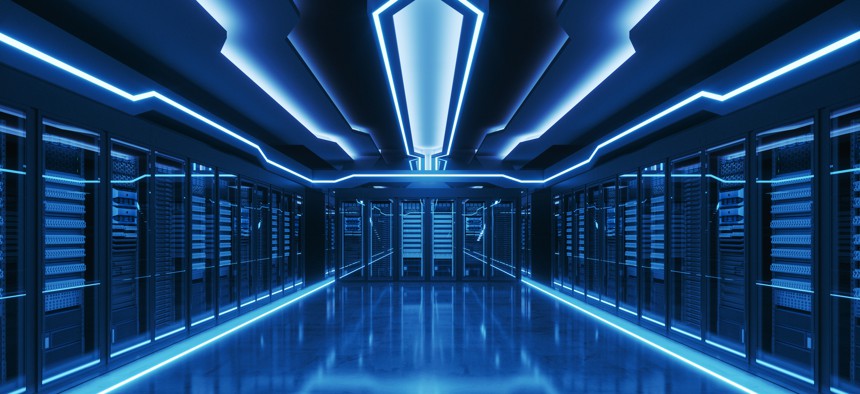Solving manpower challenges with enterprise IT modernization

Gettyimages.com/imaginima
CACI International executive and retired Army Lt. Gen. Michael Nagata explains how enterprise IT modernization offers powerful and profound ways to significantly improve combat readiness and performance.
Adopting modern technologies for military combat purposes is critical, but many decision-makers often neglect how secondary activities like enterprise IT modernization are increasingly vital for combat readiness and performance.
Historically, military effectiveness is determined through superior weaponry and combat training. More recently, deliberately weaponized technology, such as drones and satellites, have assumed a more prominent position, but generally staying within the traditional rubric of “shooting, moving, and communicating.”
Yet, what too often escapes notice is that modern technologies are causing a revolution within supporting arenas—such as logistics, personnel administration, medical transport and treatment, or various forms of training and education—in ways that hold the promise of dramatically improving the speed, accuracy, reach, and combat effectiveness of the entire U.S. military, with similar benefits for other government agencies.
Said differently, enterprise IT modernization offers powerful and profound ways to significantly improve combat readiness and performance.
What if combat training could take far less time and yet produce far more skilled troops? What if the administrative tracking, promotion, assignment, education, and family support for service members and civilian employees could become much faster and more precise? What if our military's networks and communications became both more effective and less vulnerable to adversary interference? And what if all of this could be done with fewer service members and government personnel?
Enterprise IT modernization can create these beneficial effects in multiple arenas for the Department of Defense and other national security agencies. Finding ways to significantly improve modern warfighting abilities with a smaller force structure continues to be the DoD’s struggle.
Despite ongoing efforts to improve recruitment, 2022 was the Armed Services’ worst recruiting year since the creation of the volunteer military, and 2023 has proven to be similarly challenging. It has likewise become common to find chronic staffing shortages in most civilian national security agencies as well.
An enterprise IT modernization approach enables the government, where appropriate, to effectively compensate for declining manpower with technology-based, enterprise solutions. Consolidation and modernization of enterprise support bring cost savings, customer-facing efficiencies, and increased end-user productivity. It also ensures that the operating quality remains superior while repairs, updates, and security remain highly effective.
Additionally, the implementation of zero-trust architectures improves the government’s enterprise security posture by enabling data-sharing connectivity and brings efficiencies by retiring technical debt.
Enterprise IT modernization has already proven its ability to substantially reduce much of the burden of meeting regulatory and policy requirements through platforms such as the NIST Risk Management Framework by making the vendor responsible for increasing levels of security controls development, documentation, and management. This reduces the burden on the government and primary systems integrators for managing the Federal Information Security Modernization Act compliance framework.
These network modernization efforts significantly reduce costs in terms of minimizing technical debt, licensing costs, provisioning levels of effort, patching, and break/fix. Most importantly, it shifts the burden for ensuring operating effectiveness, including during armed conflict, to the industry provider, thereby reducing military manpower and leadership bandwidth demands for such functions.
As everything from combat actions in the field to strategic planning and preparation back at home become increasingly dependent on modern technologies, the importance of approaching such requirements as a digital “enterprise” loom ever larger. Modernized enterprise IT systems are more reliable and more precise, far easier to operate and maintain, and much less susceptible to either systemic failure or adversary attack.
When properly done, enterprise IT modernization enables departments and agencies to do more, and perform better, under all conditions, and with fewer people. Subsequently, these modernization efforts can enable competitive discriminators and strengths by applying AI, ML, and RPA to drive the information landscape.

